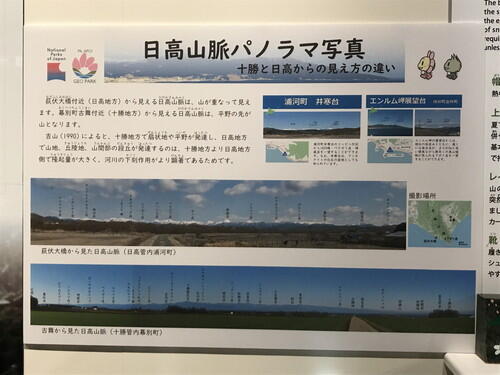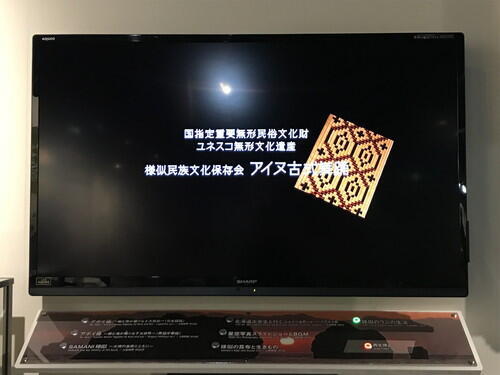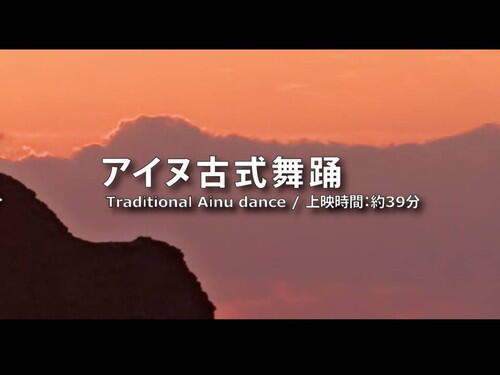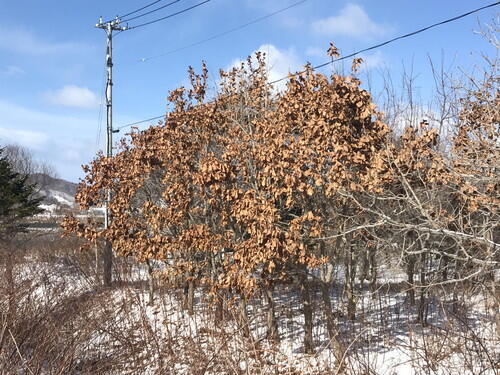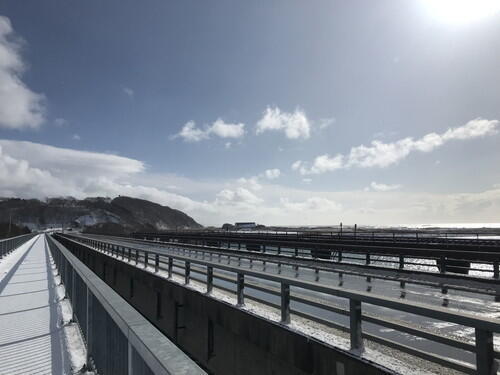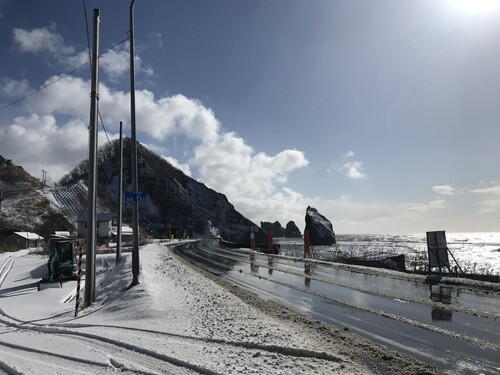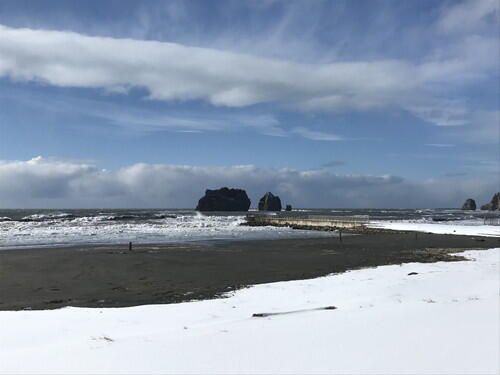Blog
2025.04.01
March KanxKan Series: A Stroll Along Samani River
Just yesterday (Mar 31), Samani woke up to a thin layer of snow on the ground. It's been a while since we had snowfall in March.
A few days ago on March 29th, we held the latest KanxKan Lecture event, "A Stroll Along Samani River."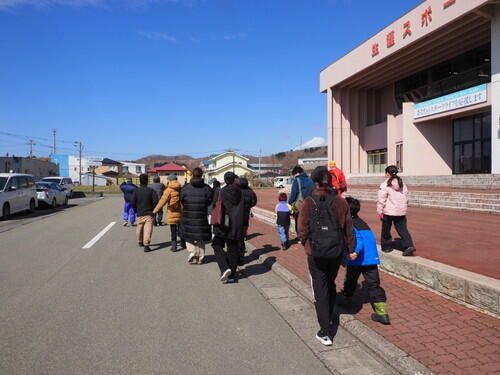 We started our walk at the central community center.
We started our walk at the central community center.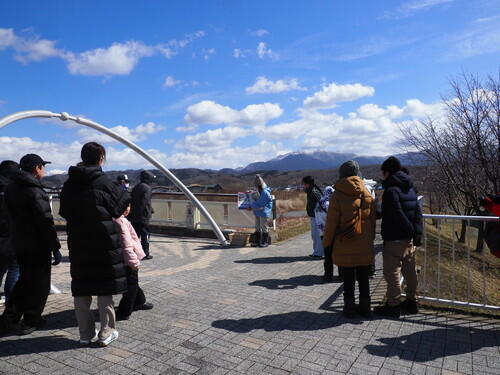 As we crossed Seseragi Bridge, we were greeted with views of Mt. Apoi, Pineshiri, Tannett, Mt. Rakodake, and Mt. Tokachidake.
As we crossed Seseragi Bridge, we were greeted with views of Mt. Apoi, Pineshiri, Tannett, Mt. Rakodake, and Mt. Tokachidake.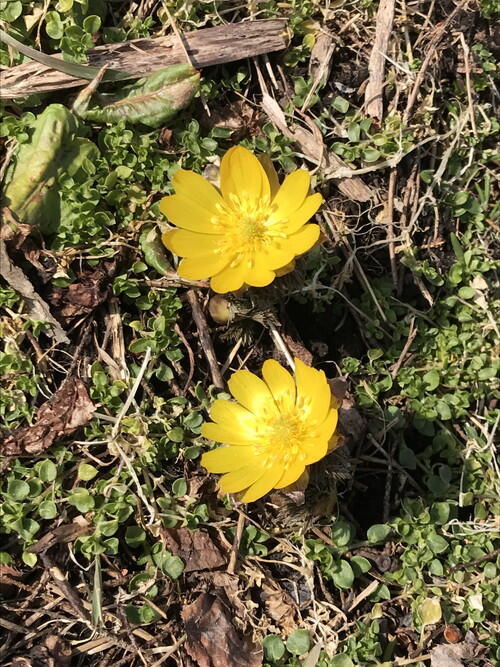 The fukujuso (buttercup) flowers were blooming. (FYI: These flowers are poisonous, so please don't eat them.)
The fukujuso (buttercup) flowers were blooming. (FYI: These flowers are poisonous, so please don't eat them.) 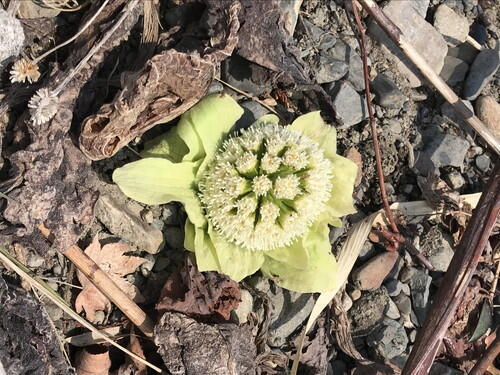 We also saw fukinoto (butterburs). (By the way, miso fukinoto is delicious!)
We also saw fukinoto (butterburs). (By the way, miso fukinoto is delicious!)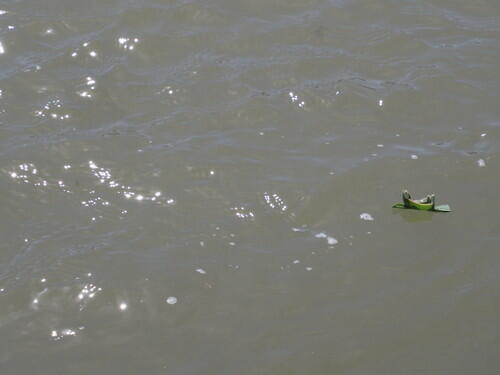
We made bamboo leaf boats to float down the river. All the participants made excellent boats!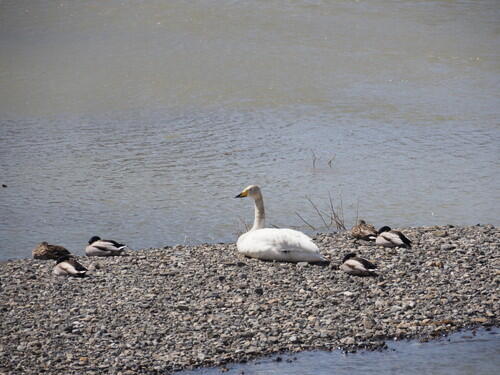 Most of the birds that are usually swimming in the river were resting on shore due to the strong winds!
Most of the birds that are usually swimming in the river were resting on shore due to the strong winds!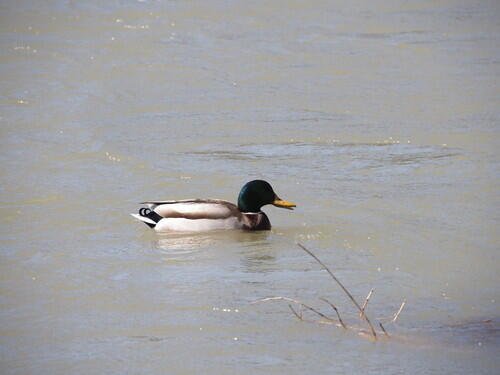 A male mallard with curly tail feathers, a green head, and a yellow bill.
A male mallard with curly tail feathers, a green head, and a yellow bill.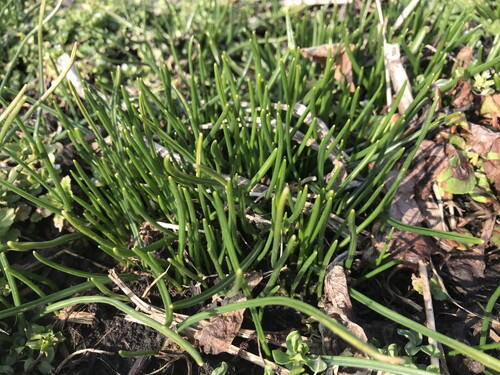 We came across some asatsuki (Japanese chives) and had the participants smell the aroma and check for bulbs in the ground. (These chives would be delicious in okonomiyaki~)
We came across some asatsuki (Japanese chives) and had the participants smell the aroma and check for bulbs in the ground. (These chives would be delicious in okonomiyaki~) Ibotanoki shrubs(species of privet), are common in Samani. In summer, they are covered in white blossoms.
Ibotanoki shrubs(species of privet), are common in Samani. In summer, they are covered in white blossoms.  The strong winds created beautiful patterns on the surface of the river. I could also see some green moss on the riverbed.
The strong winds created beautiful patterns on the surface of the river. I could also see some green moss on the riverbed. 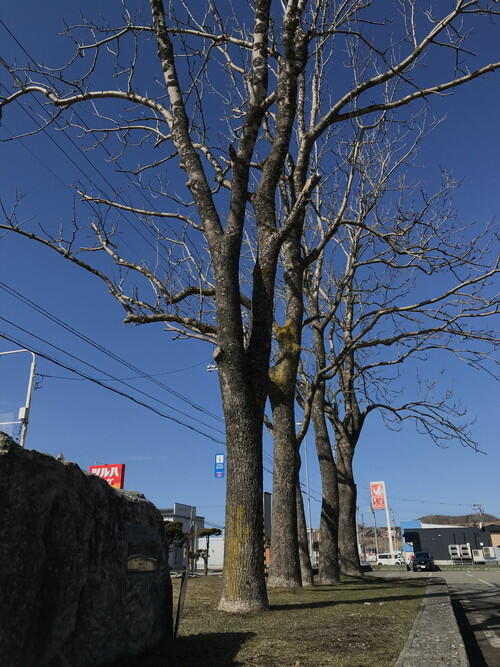 We ended our walk back at the community center, next to the Japanese ash trees that used to be part of the Samani Elementary School's schoolyard.
We ended our walk back at the community center, next to the Japanese ash trees that used to be part of the Samani Elementary School's schoolyard.
I was very glad that this event was not canceled due to bad weather! I think for next time, it might be nice to walk along the Samani River in the opposite direction in either summer or fall.
2025.03.09
Wasuke and Daikei Hakodate Information Board
Wasuke was essential to the construction of the Samani Mountain Path in 1799. Wasuke's grandson, Daikei Hakodate, devoted himself to the promotion of Hokkaido's industries and the horse racing community as a government official. He trained numerous apprentices and became the pinnacle of the race jockey and horse training network. Recently, some new information about Daikei Hakodate came to light after further research in document archives. In November 2024, we consulted a specialist to help us review and revise the content of the information board. 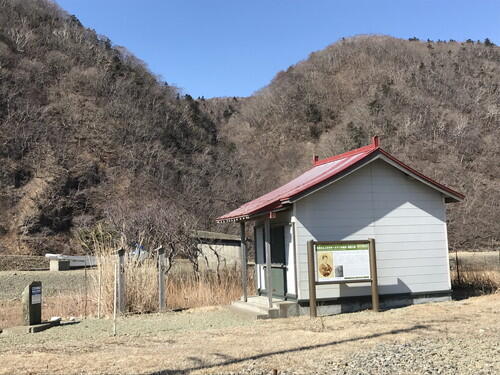
The new information board is located just east of the mouth of Horoman River and can been seen from the national road.
2025.02.22
Hidaka Mountains Exhibit Panel
Recently, we created a new exhibit panel that introduces the Hidaka Mountains. The exhibit compares two photos, one from the Tokachi side and one from the Hidaka side.
The Mt. Apoi Geopark is planning to hold a pre-tour around the Hidaka Mountains prior to the Japanese National Geopark Conference in Tokachidake Geopark in September 2025. I think the tour would be more enjoyable after viewing this exhibit.
Additionally, since the area was designated as a national park in 2024, we wanted to create a related exhibit so visitors could enjoy the mountains by climbing and just by viewing their surroundings. This photo was previously on display at the Visitor Center, but we moved it to a more prominent location and made one large panel.
These photos were provided to the Visitor Center.
2025.02.12
Mt. Apoi Visitor Center Video Display
We have replaced part of the video display at the Mt. Apoi Geopark Visitor Center with an Ainu traditional dance performance that was performed by the Samani Indigenous Culture Preservation Society in 2024.
- Video title: National Intangible Folk Cultural Property, UNESCO Intangible Cultural Heritage "Samani Indigenous Culture Preservation Society: Ainu Traditional Dance"
- Running time: 39 minutes
Previously we had to swap out the DVDs to change the video display, but we've upgraded it so now all you have to do is press a button.
2025.02.06
Winter at Urakawa's Horobetsu River
I recently visited the Horobetsu River in neighboring Urakawa Town, so here is a report of what it looks like in winter.
Higashihorobetsu, Urakawa
Speaking of winter along the Hidaka coastline, the daimyo oak retains its leaves.
The Horobetsu River is crossed by three bridges: a pedestrian walkway, a road, and a railroad bridge.
There were swans in the Horobetsu River. The Hidaka Mountains were wrapped in clouds.
Either a tufted duck or a common goldeneye duck is diving into the water in front of the swans.
Samani Shiogama Tunnel
Oyako-iwa (Parent & Child Rocks)




